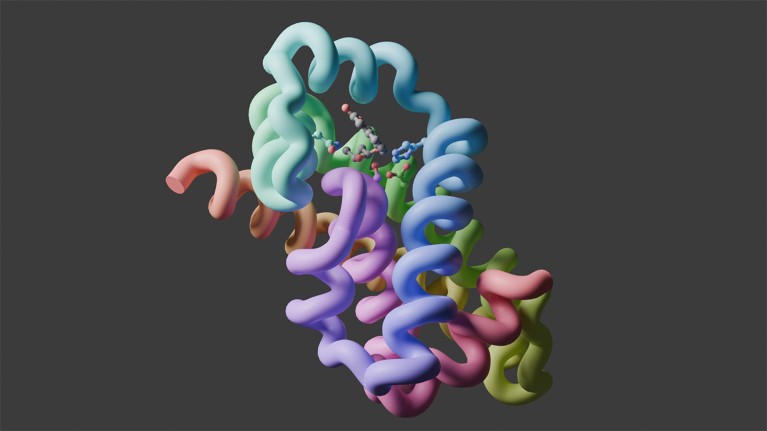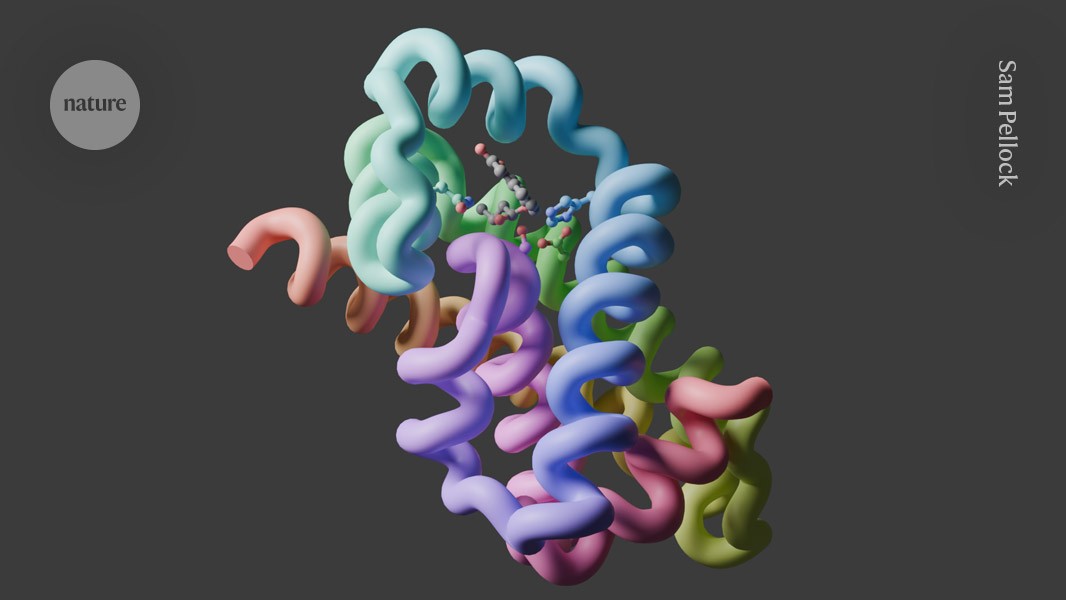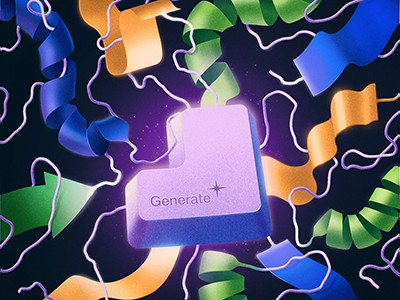
An enzyme structure designed using a combination of machine-learning tools. Credit: Sam Pellock
Researchers have used artificial intelligence (AI) to design brand-new enzymes that can go through multi-step reactions, a key feature of natural enzymes. The structures they made accelerated a four-step chemical reaction pivotal to many biological and industrial processes, including plastic recycling.
“This is a milestone in enzyme engineering,” says Huimin Zhao, a synthetic biologist at the University of Illinois Urbana-Champaign. “[It] shows that now it’s possible to design enzymes with native-like activity that could make them useful practically.”
Earlier efforts to design enzymes from scratch using AI have had limited success, often producing ones that stall after the first step of a reaction. In the latest study, published in Science on 13 February1, researchers overcame this challenge by combining several machine-learning approaches. The new enzymes were 60,000 times better at speeding up the reaction than ones previously designed to work in a similar way.
Tailoring enzymes
Earlier efforts have focused on tweaking the structures of existing enzymes to create new ones that work faster or have different functions. But this approach makes it difficult to create efficient enzymes capable of multi-step reactions.
“It is like going to the thrift store and buying a suit, and that suit probably won’t fit you perfectly. That’s what happens when we try to design enzymes that way,” says study co-author Anna Lauko, a protein designer at the University of Washington in Seattle.
AI has dreamt up a blizzard of new proteins. Do any of them actually work?
Lauko and her colleagues wanted to build enzymes that can undergo a four-step chemical reaction called serine hydrolysis, which involves breaking an ester bond between molecules. Serine hydrolases are the natural enzymes that carry out this reaction, and they are involved in many biological processes, including digestion, metabolizing fats and blood clotting.
The researchers started with an AI tool called RFdiffusion, a program they had previously developed to generate new enzyme structures from scratch2. They then created a deep neural network, called PLACER, to refine the structural design by modelling the locations of atoms in the enzyme and the molecules it binds to during every step of the reaction. This AI works like “a filter”, says Zou: it checks whether the enzyme’s active sites — the parts that interact with molecules — are compatible and properly arranged to carry out each step of the reaction. This is “very innovative”, says Zhao.



